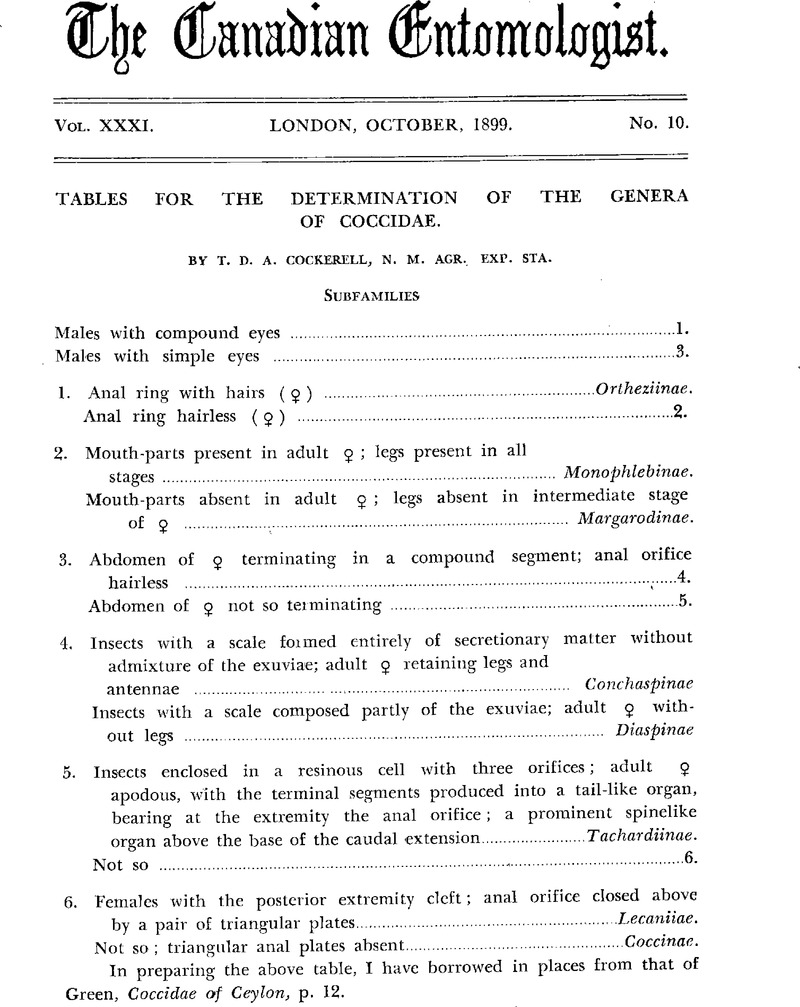Published online by Cambridge University Press: 31 May 2012

page 274 note † By the characters given, Phenacoleachia, n. g. (type Leachia zealandica, Maskell, Tr. N. Z. Inst., XXIII., p.26), will fall in this subfamily, but it has strongly Dactylopiine feature. Of his Phenacoleachia zealandica I have males, received from Mr. Maskell, and there is a slide of the females, from the same source, in the collevtion of the U. S. Department of Agriculture. The female resembles that of Dactylopius, having two long caudal filaments as in that genus, instead of the brush of Orthezia; but it has curious compound eyes consisting of ocelliform bodies forming a single ring round the head, interrupted above and below. The adult female, by its elongated form, elongated mentum, and curved spines at the end of the antennae, resembles Rhizaecus; but it differs in its 11–jointed antennae (Maskell, l. c., Pl. VI., f. 3). The anal ring bears six stout bristles.
page 274 note * An overlooked synonym of Orthezia is Cyphoma, Gistel, 1844. Nat. des Thier., p. 151. Type O. characias. (Not Cyphoma, Bolt., 1798).
page 276 note * I suppose this belongs to Eriococcini, but the larvel characters are not sufficient known. The adult is naked, resting on a cushion of cotton, which surrounds it, as in Gossyparia, from which it is distiguished by lacking legs and antennae.
page 276 note § The subgenus Thekes, Crawford (type E. eucalypti), has 7–jointed antennae; those of typical Eriococcus are 6–jointed.
page 277 note † Type S. inflatipes, Mask., Tr. N. Z. Inst., XXV., p. 238.
page 278 note * A genus of few species, found in Europe; when the male is unknown, the female is usually referred with safety to the large genus Dactylopius rather than to Oudablis.
page 278 note † Prof. Tinsley has named this genus, and indicated its characters in a thesis for the degree of B.S., presented to the N. M. Agricultural College, May 31, 1899. He will shortly prepare a paper describing the genus in detail.